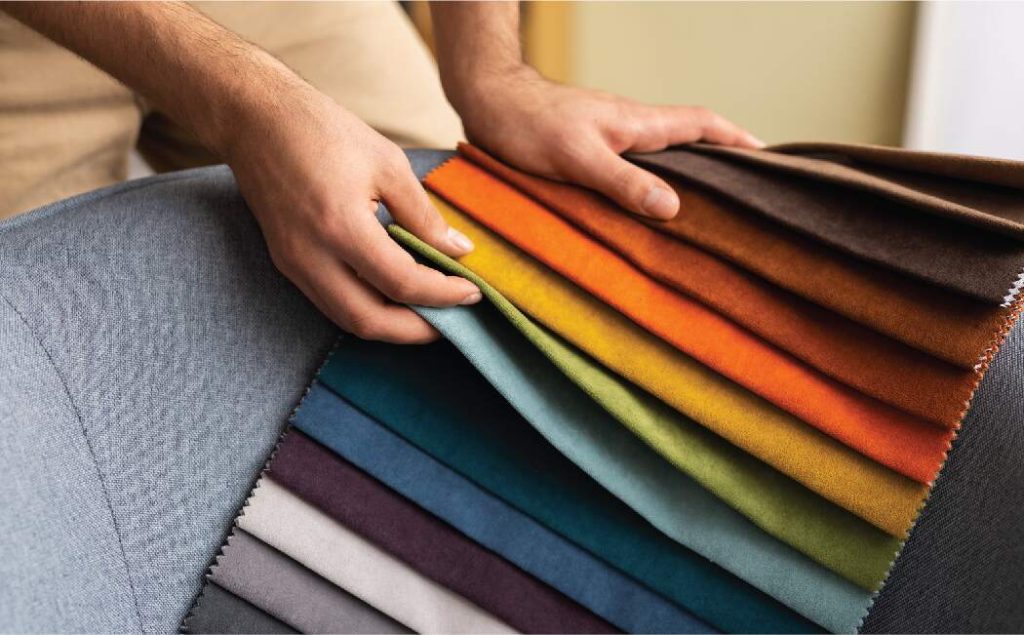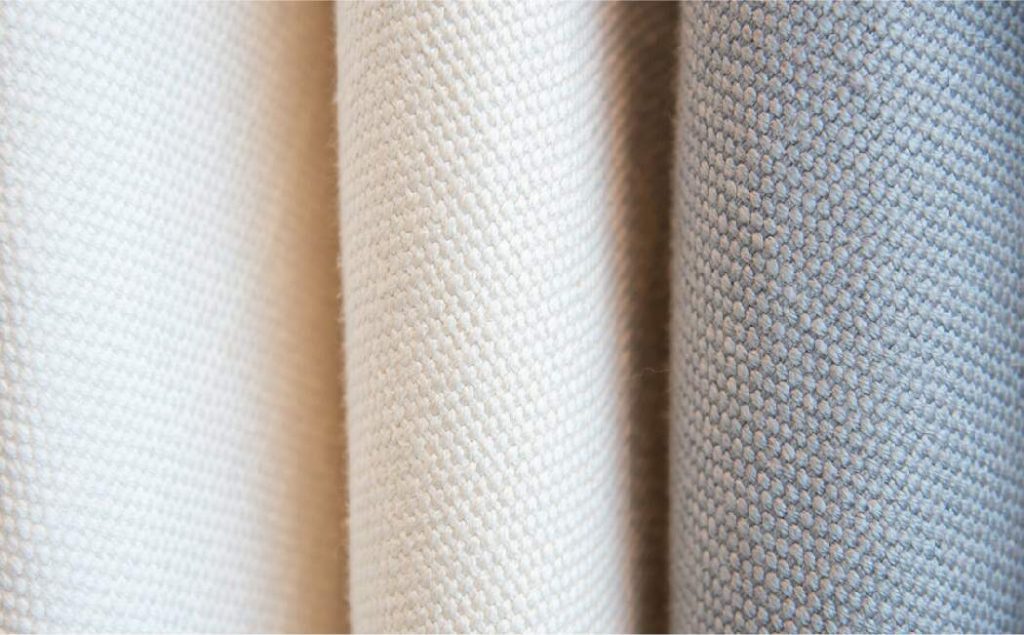The necessity of fabrics cannot be neglected if you are looking to start a clothing setup. Your clothes need high-quality fabric materials in order to stand out and stay durable. This is the prime reason to have knowledge of different clothing materials.
There is no need to worry if you lack basic information about the most suitable fibers used in making apparel because this blog has everything you need to know. Consider this text a guide to enlighten you all about fabric origin, uses, and specialties.
What is Fabric?
The term fabric refers to any material created by combining fibers together through weaving, knitting, or crocheting. Some examples of fabrics are silk, linen, denim, cotton, and velvet.
Different Types of Fabrics

Wondering about different types of fabric is a concern for those who question how to start a clothing line. The answer is yes; a lot of fabric types have versatility in fulfilling various purposes when it comes to manufacturing clothes. And they are definitely essential for anyone willing to launch a clothing business.
Here are some promising kinds of fabric for apparel production:
Natural or Organic Fabrics

Organic materials are derived from nature, which includes animals and plants. Wool, cotton, linen, and silk are natural fabrics.
Cotton
Cotton is a cheap fabric that comes from cotton plants. Fabric is one of the most commonly used materials for kids clothing and other apparel products like trousers, shirts, shorts, etc. It is a highly breathable and lightweight material for everyday use.
Wool
Wool is made up of animal hair, mostly from alpacas, goats, sheep, and llamas. The fabric is a great insulator, durable, and highly suitable for cold weather since it is very warm. Also, wool is used to make sweaters, knitted clothes, cardigans, dresses, blazers, and suits. However, it is an expensive fabric.
Silk
Silk fabric comes from silkworms’ caccoons, which makes it a type of non-synthetic fiber. It is a lightweight and ultra-soft material that is considered luxurious. Silk is used in the manufacturing of apparel items in a luxurious way. The clothes include tops, dresses, blouses, shawls, and undergarments like lingerie and sleeping suits.
Silk is also very expensive due to its being extremely soft.
Bamboo
Bamboo is a material that comes from wood and is used to make durable table runners, bath runners, placemats, and rugs. The texture is rough but esthetically rich. Due to being a knit and organic fabric, bamboo is an expensive fabric.
Linen or flax
Linen, or flax, is one of the most popular fabrics for clothing and comes from plants that grow in humid areas. The fabric is considered to be cool and highly breathable, making it perfect for summer wear. The fabric is not very expensive but reasonably costly.
Synthetic or Man-made Fabrics

As the category suggests, these fabrics are man-made, which means they are not organic or natural. Some of the synthetic materials are spandex, polyester, acrylic, nylon, and vinyl.
Polyester
Polyester is a man-made product created from plastic and oil. Polyester is good for making different materials for clothing and non-apparel products, including curtains, bed sheets, cloth or covers for tables, and pillow covers.
It is one of the most popular and frequently used fabrics for fast-fashion items. Lastly, the fabric is inexpensive, which makes it a common material to use for apparel manufacturing.
Rayon or Viscose Rayon
Although rayon comes from wood pulp, it cannot be considered a natural fabric since it is transformed into fabric through artificial means. Also, it is labeled as an artificial silk as it is comfortable, lightweight, soft, and flowy; in other words, rayon, or its variation, viscose rayon, has silk-like characteristics and is believed to be good for clothing.
However, the fabric is not very durable. You can say that it has average durability. It is not expensive and can be used for making dresses, blouses, amisoles, loose-fitting pants, shawls, shirts, skirts, and pajamas.
Nylon
The fabric is a completely synthetic material extracted from reacting adipic acid and diamine acid to form a polymer, also considered a nylon salt. Nylon is also known as polymer fabric and is usually used in stockings, tights, yoga leggings, and other perfect-fitting apparel. The material is expensive due to its costly production.
Spandex
The other names for spandex are lycra and elastane due to its flexible nature. The fabric is created through the mixing of diisocyanate monomer and macroglycol within a certain kind of reaction vessel. Spandex is used in motion capture suits, underwear, swimwear, and bicycle clothing.
It is not breathable and sticks to the skin. Also, the fabric is costly, and the clothes made of spandex are also very expensive.
Acrylic
Acrylic is a fossil fuel-derived material created by reacting certain coal-based chemicals or petroleum with various monomers. This fabric is made from acrylonitrile, a synthetic polymer. In terms of clothing, acrylic is not a popular choice due to its being the least breathable and most flammable.
However, it is used in clothing, rugs, awnings, upholstery, boat and vehicle covers, luggage, blankets, and stuffed toys. Moreover, it is considered to be a cheaper alternative to wool.
Vinyon
Polyvinyl chloride is used to form vinyon fabric, which is a flame-resistant material used in kids clothing, carpeting, fishing nets, drapes, blankets, and some industrial products like traps, outdoor furniture, awnings, etc.
Woven Fabrics

Two pieces of yarn that blend vertically and horizontally on a loom make woven materials. It consists of a warp and a weft. Weft is associated with the yarn going across the fabric width, and wrap can be defined as the yarn going down the loom’s length. Let’s dive into the three types of woven fabrics.
- Plain Weave
- Satin Weave
- Twill Weave
Chiffon, crepe, denim, linen, satin, and silk are examples of popular woven fabrics.
Chiffon
Chiffon comes from twisted yarn, usually made of nylon, silk, rayon, or polyester, and is a plain-woven material. It is a lightweight, sheer, and breathable fabric, but it has a bit of a rough feel. The material is average in terms of cost. The fabric is commonly dried and can frequently be seen in blouses, dresses, wedding gowns, and scarves.
Crepe
Crepe is a versatile fabric that usually comes from silk, cotton, wool, or some other synthetic fiber. It is a lightweight material, a twisted plain-woven fabric, and it has a rough texture that is wrinkle-free. The fabric is costly due to its trait of being used for luxurious clothing.
Denim
Denim is a combination of woven cotton twill material that is created with white cotton stuffing yarn and entwined cotton wrap yarn. It’s a commonly used fabric known for its vivid texture, durability, sturdiness, and comfort.
The fabric is most commonly used to create blue jeans, jackets, and other dresses. Usually, denim is not costly, but some of its types, like raw organic denim, are.
Leather
The natural fabric is made of animal skins or hides. Leather is usually created using the skins of cows, pigs, crocodiles, and lambs. It is a durable, wrinkle-resistant, and fashionable fabric.
The use of leather can be seen in shoes, jackets, coats, belts, and even pants. It is also a warm material, best for cold weather conditions. The fabric comes under the category of luxury items, and therefore, real leather can be very expensive.
What is GSM in Fabric?
Grams per square meter (GSM) is the metric in which fabric or any material is weighed. The term refers to the thickness of fabric, generally indicating the heaviness of the fabric in terms of weight.
Every fabric has a different GSM value based on its texture, thickness, and quality. For example, the fabric used in t-shirts commonly weighs between 160 and 220 GSM.
Conclusion
Different fabric types fulfill a variety of purposes when it comes to manufacturing clothes. They are divided into multiple categories, like organic fabrics, synthetic fabrics, and some others. The materials used in clothes are cotton, polyester, nylon, denim, wool, silk, spandex, etc.
All of these fabrics have different properties, origins, costs, and functionalities. Those willing to launch their clothing lines need to have a greater knowledge of the materials used in high- and low-quality clothes good for cold and warm weather.











